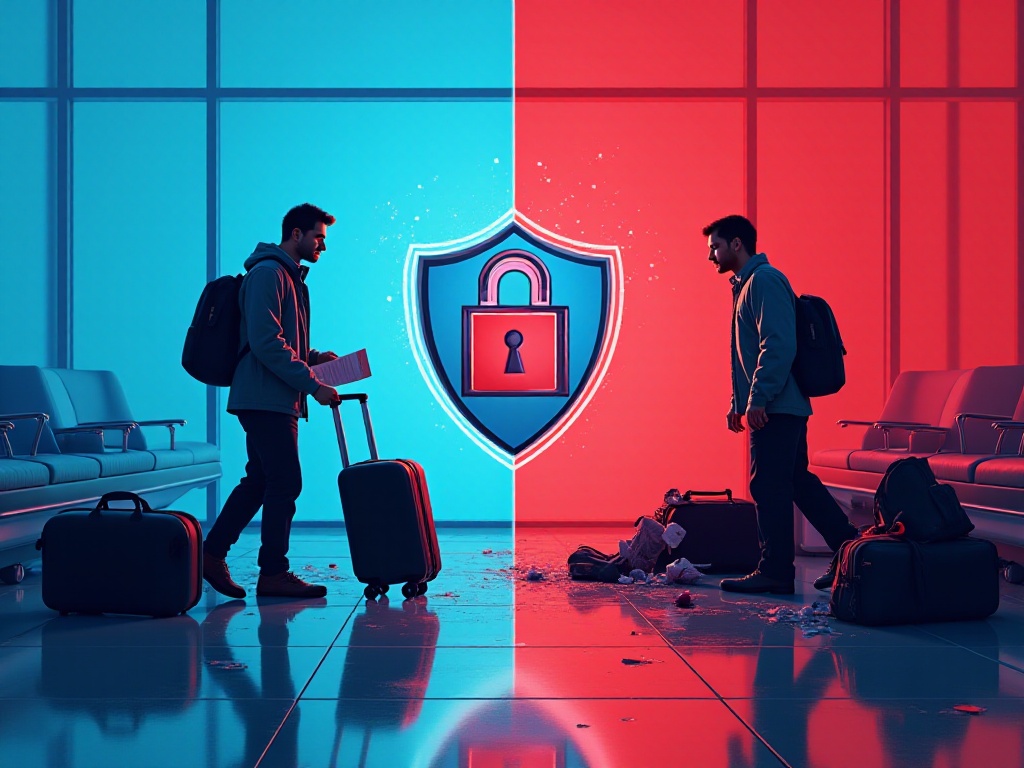
Pre-Trip Preparation
High-altitude self-driving is different from regular road trips and requires more thorough preparation. I remember my first self-driving trip to Tibet when I suffered from inadequate preparation. It was in the summer of 2019 when I drove a Toyota Prado from Chengdu, planning to reach Lhasa via National Highway 318. Despite doing homework in advance, I still encountered many unexpected situations on the road.
Over these years, I have accumulated over 20,000 kilometers on the Sichuan-Tibet and Qinghai-Tibet routes, visiting every scenic spot in Tibet. Today, I'd like to share my years of experience with you, hoping to help you avoid some detours.
First, let's talk about vehicle selection. For Tibet self-driving, it's best to choose an SUV with high ground clearance and powerful performance. According to statistics from the Tibet Autonomous Region Transportation Department, over 65% of self-driving vehicles entering Tibet in 2023 were mid to large-sized SUVs. This data speaks volumes. I personally recommend choosing vehicles with engines of 2.0T or above, as engine power decreases by 20%-30% in high-altitude areas due to thin air.
For specific vehicle preparation, you need to focus on checking these parts: - Tire condition (recommend carrying two spare tires) - Brake system - Engine oil (best to use fully synthetic oil) - Brake fluid - Antifreeze (must be suitable for environments below -40°C)
Did you know? Regular antifreeze might fail in areas above 4,000 meters. From my experience, it's best to choose antifreeze with anti-boiling additives.
Route Planning
The most common Tibet driving routes are the Sichuan-Tibet and Qinghai-Tibet highways. Each route has its characteristics, and your choice should depend on your time and physical condition. I recommend beginners take the Qinghai-Tibet route first, as it has better road conditions and more complete service facilities.
Here are the time arrangements for two classic routes I've summarized:
Sichuan-Tibet Route (Chengdu-Lhasa): - Total distance about 2,149 kilometers - Recommended duration 12-15 days - Average altitude above 3,500 meters - Passes through 8 mountain passes above 4,000 meters
Qinghai-Tibet Route (Xining-Lhasa): - Total distance about 1,937 kilometers - Recommended duration 8-10 days - Average altitude above 4,000 meters - Relatively more supply points along the way
According to Tibet Tourism Bureau data, in 2023, among self-driving tourists entering Tibet, 45% chose the Sichuan-Tibet route, 35% chose the Qinghai-Tibet route, and 20% chose other routes. This data shows that these two classic routes remain the most popular choices.
Altitude Sickness
When talking about self-driving in Tibet, we must address altitude sickness. You may have heard various claims about altitude sickness, with some saying you must take Rhodiola in advance, others suggesting oxygen bottles. However, the reality is that everyone's physical condition is different, and adaptation to high altitude varies.
According to statistics from the Tibet Autonomous Region Health Commission, about 40% of tourists entering Tibet experience varying degrees of altitude sickness, with severe reactions accounting for less than 5%. This data tells us that most people's altitude reactions are mild and can be managed through proper prevention and adjustment.
My suggestions are: 1. Start taking Rhodiola capsules two weeks before entering Tibet (but don't rely on them blindly) 2. Control trip intensity, don't drive more than 8 hours per day 3. Get adequate rest, avoid staying up late 4. Drink plenty of water, but avoid alcohol 5. Carry some altitude sickness medications like Nuodikang, Ibuprofen, etc.
I remember meeting a fellow traveler from Guangdong during my second Tibet trip, who specifically trained his body a month in advance by running 5 kilometers daily. As a result, his altitude sickness was much milder than during his first visit. This proves that advance physical training really helps.
Supply Plan
Supply planning is crucial for self-driving in Tibet. Many first-timers might think supplies aren't an issue given the good road conditions nowadays. However, in some remote areas, the distance between gas stations can exceed 400 kilometers.
Based on my experience, these supplies are essential: - At least 40 liters of spare fuel in containers - More than 10 liters of purified water - High-energy food (chocolate, nuts, etc.) - Common medicines - Warm clothing - Emergency toolbox
Special reminder: on the Qinghai-Tibet Plateau, temperature differences between day and night can exceed 20 degrees. When I camped at Namtso Lake last August, the daytime temperature was 25°C but dropped to 3°C at night. So adequate clothing preparation is essential.
Communication Assurance
Many people might worry about communication in Tibet. Indeed, mobile signals can be unstable in some remote areas. However, with recent improvements in communication infrastructure, the situation has gotten much better.
According to Ministry of Industry and Information Technology data, by the end of 2023, 4G network coverage in Tibet had reached over 95%, with major tourist routes achieving full coverage. However, I still recommend preparing this equipment: - Vehicle intercom - Backup power banks - Offline maps - Satellite positioning devices
During a self-drive last year, I successfully found my destination using pre-downloaded offline maps when there was no signal. This made me deeply appreciate the importance of backup navigation.
Photography Tips
Tibet's scenery is too beautiful not to photograph. However, there are special considerations for photography in high-altitude areas.
First is equipment protection. High-altitude areas have large temperature variations and dry air, which demands a lot from cameras. I recommend: - Prepare moisture-proof boxes - Bring several spare batteries (low temperatures accelerate battery consumption) - Bring UV filters and polarizing filters - Prepare dust-proof bags
Second are shooting techniques. With strong light and changeable weather in high-altitude areas, pay special attention to: - Early morning and evening are the best shooting times - Use polarizing filters to control reflections - Take more wide-angle and panoramic shots - Pay attention to foreground composition
Last year when shooting sunrise at Namtso Lake, I arrived at the shooting location at 4 AM and captured stunning pink dawn. This taught me that in photography, advance preparation and waiting are worthwhile.
Emergency Handling
Speaking of emergency handling, I must mention a real case. Last summer, while returning to Lhasa from Shigatse, I encountered a self-driving convoy. One of their vehicles had a flat tire, but they hadn't brought a jack. I ended up helping them change the tire, which delayed us nearly two hours.
Therefore, I recommend you must prepare these emergency items: - Spare tire (at least one) - Jack and wrenches - Basic repair tools - Emergency food and water - Thermal blankets - First aid kit
Additionally, recommend recording these important phone numbers before departure: - Tibet Tourism Rescue Center: 0891-6333333 - Tibet Traffic Accident Rescue: 0891-6598111 - Local police numbers - Insurance company numbers
Conclusion
Writing this far, I suddenly recall an incident at Everest Base Camp last year. That night, sitting around a campfire with fellow travelers, someone asked, "Why choose to self-drive to Tibet? Isn't flying more convenient?"
My answer was: "Self-driving isn't just a mode of transportation; it's an experience. On this road, you'll see the most beautiful scenery, meet the most sincere people, and face various challenges. It's these challenges and the process of overcoming them that make the entire journey more meaningful."
What do you think? If you also have experience with or plans for self-driving in Tibet, welcome to share your thoughts and experiences in the comments. Let's exchange ideas and grow together.
Next
What's it Like to Travel Alone in Istanbul? Safety Tips and Practical Advice
A comprehensive guide covering pre-trip preparation, personal safety measures, accommodation security, financial protection, and emergency response procedures to help travelers minimize risks and ensure a safe journey
A Solo International Traveler's Safety Guide: From Pre-Trip Preparation to Emergency Response - Everything You Need to Know
A comprehensive travel safety guide covering pre-trip preparation, destination research, practical information gathering, personal security, financial safety, transportation safety, and emergency response protocols for a secure travel experience
Complete Guide to Self-Driving Tour in Tibet: Insights from a Veteran Driver's 20,000 Kilometers Experience
A comprehensive guide covering essential travel safety aspects, including pre-trip preparation, safety protocols during travel, emergency planning, and practical security advice for different groups of travelers
Next

What's it Like to Travel Alone in Istanbul? Safety Tips and Practical Advice
A comprehensive guide covering pre-trip preparation, personal safety measures, accommodation security, financial protection, and emergency response procedures to help travelers minimize risks and ensure a safe journey

A Solo International Traveler's Safety Guide: From Pre-Trip Preparation to Emergency Response - Everything You Need to Know
A comprehensive travel safety guide covering pre-trip preparation, destination research, practical information gathering, personal security, financial safety, transportation safety, and emergency response protocols for a secure travel experience

Complete Guide to Self-Driving Tour in Tibet: Insights from a Veteran Driver's 20,000 Kilometers Experience
A comprehensive guide covering essential travel safety aspects, including pre-trip preparation, safety protocols during travel, emergency planning, and practical security advice for different groups of travelers



